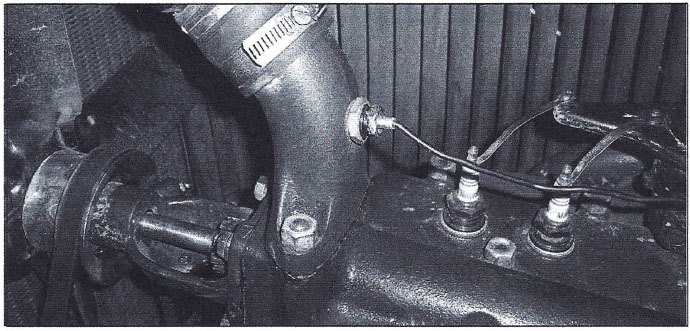That is a question that has been kicked around the garage for some time now. The early thoughts were that a thermostat was needed to slow the water flow in the radiator. Extensive tests have shown that changes in the rate of water flow through the radiator results in negligeable change in water temperature. A Model A radiator should cool the engine under normal driving conditions.

A good clean radiator, even a stock one, should keep the engine operating at a normal level (160 -170 degrees). If your engine is running hot you should look at all of the things that could cause that to occur. An older radiator, one that appears in good shape and flows well, may have deteriorating connections of the fins to the tubes, which reduces its ability to transfer heat to the surrounding air and is usually the cause of engines running hot.
The original design of the Model A radiator is for a Thermo-Syphon system used in conjunction with a water pump. The entire cooling system was engineered to use the best of both types of systems. The thermo-syphon system keeps the coolant in place until the engine reaches an operating temperature of around 180 degrees. The pump increases the flow of coolant when the engine is operating at higher speeds and the thermo-syphon system would not move the coolant fast enough to cool the engine. So the Model A was equipped to have a thermostat of sorts with the thermo-syphon system helping the engine warm up before the coolant started moving.
This still doesn’t answer the question regarding installing a new thermostat. The modern fuel of today requires the engine to operate at above 160 degrees to burn clean and with the most efficiency.
Tests were made using a new reproduction radiator along with a high compression head. The Motometer temperature gage (thermometer) on the radiator cap takes it’s readings through a special stud, mounted in Motormeter. Through many operating conditions, the thermometer never rose to the operating range on the Motometer. A modern temperature gage with degree readings was then installed along with a tempera ture sensor mounted in the upper water outlet neck. After running the Model A through many operating conditions it was surprising to find that the newly installed temperature gauge never rose above 140 degrees on a hot summer outing.
After seeing the engine operating so cold, a 160-degree thermostat was installed in the upper radiator hose. In a short period of time the engine water temperature now rises to 160degrees F as seen on the Water Temperature Gauge. The opening and closing of the thermostat can be seen on the temperature . gauge as the indicated temperature rises to 170° and then drops to 160° as the thermostat opens and closes.
Installing a thermostat will allow the engine to operate at the most efficient temperature range, getting the most out of the fuel that is being used and at the prices we are being forced to pay you best get the most out of your money.
This is an easy and beneficial improvement that will make your Model A operate at an efficient temperature level, allowing complete and proper burning of the fuel, thereby reducing unburned fuel and fuel contaminates that produce carbon buildup Water Temp Gauge and sludge in the engine. The illustrated thermostat can be purchased from any Model A Parts Supplier in temperature ranges of 160° or 180°F operation. Installing a water temperature sensor in the upper water outlet neck and a water temperature gauge, will provide a more accurate indication of your engines operating temperature.
